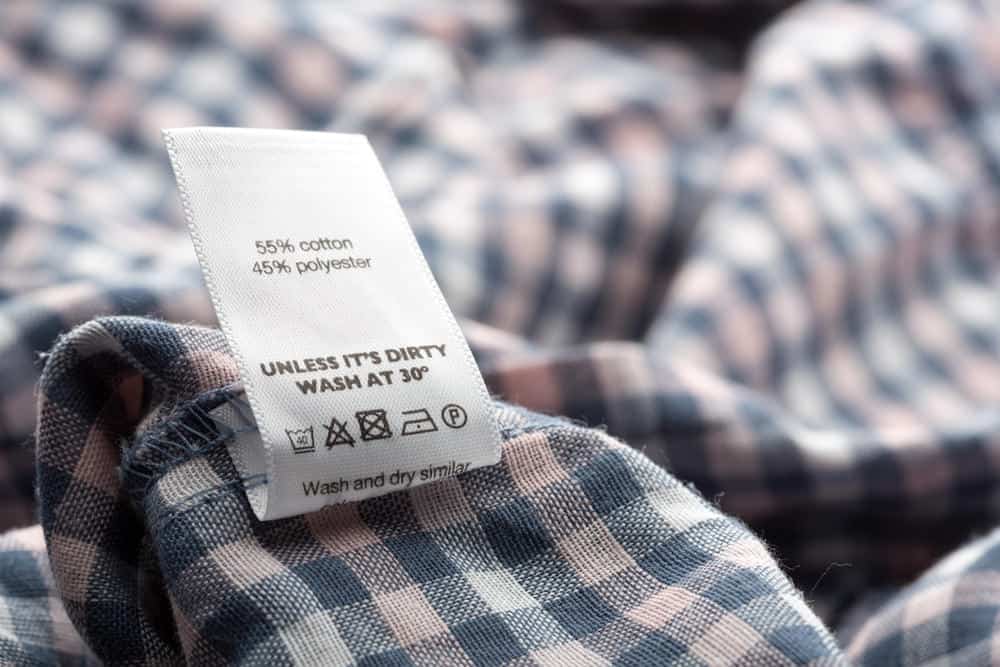UPDATE: At the bottom of the original, I provide an update to my tagging project. The update was added July 8, 2020.
ANOTHER UPDATE SEPTEMBER 10, 2020: I set out updated search traffic to tag archive pages. BIG IMPROVEMENT!!!
I’ve never systematically tagged posts until last week.
Over the years, I’d add the odd tag here and there but it was so random and inconsistent I might as well not have.
I’m not sure why I never bothered.
At a minimum, a well-tagged site, especially one with a decent amount of content, helps visitors navigate a site.
Tag clicks results in more page views. More page views equals more ad revenue (generally). You’d think an ad guy like me would jump all over tagging.
I’ve used categories, but never tags.
Yeah, go ahead and say it. I know you’re thinking it.
How could you not tag properly? What is this amateur hour?
I agree. Mea culpa. Another big miss on my part.
It’s all good though.
Or should I say it’s Saul Goodman (“Better Call Saul” TV show reference).
You probably think I watch a ton of TV given my TV references (Fat Stacks is from a Breaking Bad TV show quote by Jesse Pinkman when he says “Gonna make some cheddar, yo. Cheddar, Mr. White. FAT STACKS. Dead Presidents. Cash Money. We’re gonna own this city.”
Admittedly I watch my fair share. It’s the golden age of TV (streaming, HBO, etc.) and I love winding down with a show for an hour or two at night.
Back to my original point.
I don’t mind having not tagged all these years because I’m enjoying doing it now. It’s a new pet project that I’m excited about.
Besides, as usual, I’m able to crank out a blog post for ya as a result. Win/win.
Listen and Watch
Watch the video version:
Benefits of tagging
1. User experience (aka more page views which is more money… in theory): UX is a euphemism for more money.
Which reminds me, I finally have a tagline for Fat Stacks. It’s “Get Fatter”.
How’d I go from Tags to tagline. Back to Tags and tagging.
Tags offer more navigation options for visitors to learn more or find more of what they want. You enjoy more page views. Your visitor has a better chance of finding more what they want. It’s a win/win.
That one reason alone is worth tagging.
But wait, there’s more!!!
Below are 2 unforeseen benefits of tagging that I’m getting a lot out of.
2. Get more article ideas (fill in the gaps):
When you have well-planned taxonomies (categories and especially tags), you can quickly see areas (topics) that need more articles. For example if one tag has only 3 articles, there could be opportunities there. This is helpful when a site grows into hundreds or thousands of articles.
3. Interlinking opportunities:
Once you assign most or all posts tags, it becomes really easy to interlink your site thoroughly. You can interlink via categories and tags.
What’s even better is once you have well-organized taxonomies at this stage, you can easily train a VA to go in and interlink all posts with the same tag.
Go to the “Tags” dashboard and in the right column is a list of numbers. Those numbers indicate how many posts have that tag. Click the number and you’ll see all the posts with that tag.
Here’s a screenshot:
Your VA simply goes into each article and interlinks it all together.
Note, if you have 60 articles with the same tag, I probably wouldn’t interlink all 60. I’d restrict interlinking to groups that are tightly connected.
Let’s back up in case you’re new to this blogging gig
SEO, RPM, CTR, SERPs, IM, EPMV – sometimes I assume people know all this stuff, but I should know better. Once upon a time I didn’t know what hosting, SEO, WordPress, etc. were. We all start knowing nothing.
So back to basics.
What is tagging?
Tags are taxonomies. They are another way to organize vast amounts of content. Categories are the main topics. Tags offer another categorization dimension. Here’s an example.
Niche: Cars
Decent categories: Luxury, Sedans, SUVs, Crossovers, Minivans, Pickup Trucks, Electric and Sports Cars.
Possible Tags:
- Red, White, Blue… all colors
- Toyota, Volvo, Mercedes… all brands
When should you start tagging posts?
You can start right away or wait until you have a sizeable batch of content. If you have a clear plan for your site, you can probably set out good tags right off the bat. If not, it might good to wait until your site is filled out.
The advantage of having plenty of content is it’s more clear what your tags should be. With my thousands of articles, it’s not that hard to choose decent tags and then apply them to multiple articles quickly.
Can you tag pages in WordPress?
By default, WordPress won’t permit you to tag or categorize pages. However, as the old saying goes, “there’s a plugin for that.”
I use Ninja Pages plugin to add the ability to add categories and tags to pages.
There is no magic number. It will depend on your site and how you want to go about it. There is merit in being very liberal with tagging. In other words, you might want to have hundreds or thousands of tags for nuanced navigation.
For now, I’m taking a different approach. I’m carefully choosing tags and creating them only when I have 3+ articles for any particular tag. This results in not all that many tags compared to other sites of a similar size. Over time, however, my list of tags will grow.
More tagging tips
1. Review your tags regularly
It’s a good idea to review your list of tags regularly, especially if you have other people working on your site. It’s easy, when tagging a post, to inject the wrong word or input a singular when normally it’s plural. You want to keep your tag list clean and accurate.
2. Avoid bad tagging practices
Bad tagging (IMO) is being inconsistent, random or way too one-off about it. I avoid tagging if I don’t expect to add more than at least a few applicable articles. However, if I suspect I may expand on a topic, I’ll tag it with that topic. Sometimes it’s a judgment call.
I’m sure some people disagree with me and are very liberal with tagging. I may get more liberal as time goes on but for now I’m taking it slow and steady.
3. Add tag links at the bottom of your posts
I display the list of tags for posts both at the top and bottom of posts. Most themes only display at the top by default.
However, you can ask your theme developer for the code snippet necessary to display the tags and then use AdInserter plugin to place it below your content. The code snippet will be php, which you can convert to a usable shortcode with the Insert PHP Code Snippet plugin. You can also do this with categories.
4. If you delete or change a tag URL slug, redirect it
Tag management will require deleting and changing Tag URL slugs. This is fine as long as you add a redirect. I use Yoast Premium SEO plugin which creates redirects automatically when a URL slug is changed. If you don’t want to pay for the plugin, you can create a redirect manually.
If you delete a tag, you can either serve the 404 error page or redirect it to something relevant.
5. Outsource tag management at your own risk
I’ve issued all VAs instructions that they are not to create or add tags. I find too many mistakes are made. Since it doesn’t take long to tag a couple of new articles each day, I do it. I’m not saying it can’t be outsourced… but if that’s what you do, review their work to ensure you’re not ending up with hundreds or thousands of useless tags (along with tags with spelling errors).
6. Maintain a list of potential tags
I have a growing list of potential tags. These are topics on my site that I have only one or two articles on that tag topic. I maintain the list for more article topics to cover and once published, I can create a new tag.
FYI, I’ve not yet fully deployed tagging on Fatstacks. I’m still working on tagging my biggest niche site. This will take a week or two (or four) to complete. Then I have a handful of other sites to do. I get the irony of a WordPress about tagging not being tagged.
7. Add content to your tag archive pages
This I think helped get lots of traffic to my high-traffic tag archive pages. I added about 500 to 800 words split up above and below the post grid.
UPDATE – JULY 8, 2020
Some tagged pages do get search traffic but not many and for the most part it’s not all that much traffic.
Here is the organic search traffic volume for the previous 30 days for the top 10 tag archive pages:
- 643 visits
- 129 visits
- 59 visits
- 56 visits
- 49 visits
- 42 visits
- 38 visits
- 35 visits
- 31 visits
- 28 visits
Is that a home run?
Hardly. 2 tag archives are doing well but that’s not much out of 262 tag archive pages. Nevertheless, I’m staying the course.
As for any other benefits, none that I can track.
I can safely say that indexing my tag pages has not hurt SEO since search traffic has grown since indexing tag pages. However, I can’t say doing this helped SEO.
Some of those tag archives have additional text on them and some don’t. The top 2 with decent volume do have about 700 words of text below the post grid in the form of an FAQ.
Keep in mind that I now have 262 tag archive pages on that site.
SEPT. 11/20 UPDATED TRAFFIC NUMBERS TO TAG ARCHIVE PAGES
Here are the results as of yesterday (Sept. 11, 2020):
Tag archive 1 (AWESOME)
- Google traffic: 1,934 (30 days)
- Word count: 701
- Referring domains: 67 (naturally acquired)
- KW difficulty (Ahrefs): 24
- Monthly search volume (Ahrefs): 7,700
- Rank: 15
Tag archive 2
- Google traffic: 339 (30 days)
- Word count: 493 words
- Referring domains: 19
- KW difficulty (Ahrefs): 30
- Monthly search volume (Ahrefs): 9,500
- Rank: 8
Tag archive 3
- Google traffic: 239
- Word count: 15
- Referring domains: 1
- KW difficulty (Ahrefs): 10
- Monthly search volume (Ahrefs): 90
- Rank: 1
Tag archive 4
- Google traffic: 135 (30 days)
- Word count: 940
- Referring domains: 1
- KW difficulty (Ahrefs): 2
- Monthly search volume (Ahrefs): 250
- Rank: 11
Tag archive 5
- Google traffic: 135 (30 days)
- Word count: 1,135
- Referring domains: 1
- KW difficulty (Ahrefs): 26
- Monthly search volume (Ahrefs): 800
- Rank: 33
Tag archive 6
- Google traffic: 104 (30 days)
- Word count: 1,192
- Referring domains: 1
- KW difficulty (Ahrefs): 10
- Monthly search volume (Ahrefs): 20
- Rank: 13
Tag archive 7
- Google traffic: 73 (30 days)
- Word count: 20
- Referring domains: 1
- KW difficulty (Ahrefs): 3
- Monthly search volume (Ahrefs): 30
- Rank: 6
Definitely good improvement but still not great results overall.
Will I index tag archives for other sites?
Yes, I will. It’s my view that it’s a good SEO practice and my view is based on an in-house SEO for one of the biggest sites on the Web.
Another thing to keep in mind is that I’m methodical about creating tags. I don’t just blast them out willy nilly. I only create a tag when there are multiple articles that apply and then I consistently apply applicable tags to new articles.

Jon Dykstra is a six figure niche site creator with 10+ years of experience. His willingness to openly share his wins and losses in the email newsletter he publishes has made him a go-to source of guidance and motivation for many. His popular “Niche site profits” course has helped thousands follow his footsteps in creating simple niche sites that earn big.








“an ad guy like would jump all over tagging.” should probably say “an ad guy like ME would jump all over tagging.”
Thanks Ron. It’s corrected.
Hey Jon, I seem to remember you writing about “silo” architecture a while ago. Don’t tags break the site structure – unless maybe you keep them all within the same category? Years ago, I did a heap of research on silo sites – the general consensus on various websites & forums, was that tags should be avoided. Interested to see if using tags brings you increased traffic.
Freya, I’ve been thinking about that too. But I actually think that with larger sites, tags offer you an additional way to create silos that are cross-sections of your “real” silos. For example, let’s say you have a site about dog breeds. Your silos are around specific breeds and you create a silo for poodles, a silo for labradors and a silo for chihuahuas etc. That’s how your categories and sub-categories are arranged – by breeds. However, each silo contains posts about topics such as food, dog toys, etc. You have “What are the best dog toys for a labrador” and “what are the best dog toys for a poodle” in two different silos. Tags allow you to bring them together by creating a “dog toys” tag that runs across your silos.
I hope that makes sense.
@Anne That’s a great explanation of how to use tags!
Hey Jon,
This is a good way to keep a visitor on your site and increase PVs. I tried looking for Tags on your site, but I am unable to find if you have used the Tags on fatstacksblog. Can you please share some examples or posts where you have used the tags?
Haven’t gotten around to putting tags on fatstacksblog.com. I focus most of my time on my other sites.
I love the idea of using tags to find interlinking opps. I didn’t think of that.
One thing I use tags for is seasonal posts. I put them on holiday posts (Christmas, Halloween, Easter, etc.) and seasons (Summer, Spring, etc.) and then when I’m making my editorial calendar I can plan out what posts to update and promote for the upcoming months.
Should an article or post have multiple tags or is that bad practice?
Yeah, multiple relevant tags for a post is fine. I do that but seldom does the number of tags exceed 3 per post.
Very nice article, Jon. Thanks again as always for your insight & taking the time out of your day to share with us. 🙂